A Comprehensive Guide to LTC8043FN8#PBF Digital to Analog Converter
Linear Technology/Analog Devices
DAC Current - Unbuffered Through Hole R-2R R 7.62mm mm
Unit Price: $10.038167
Ext Price: $10.04









DAC Current - Unbuffered Through Hole R-2R R 7.62mm mm
This article provides a detailed technical overview of the LTC8043FN8#PBF Digital to Analog Converter (DAC) manufactured by Linear Technology/Analog Devices. It covers the product description, key features, primary and secondary applications, reference designs, alternative parts, and frequently asked questions about this versatile DAC.
Product Introduction
1. Description:
The LTC8043FN8#PBF is a 12-bit Digital to Analog Converter (DAC) with an operating temperature range of -40°C to 85°C. It features an R-2R architecture and an external reference type. The DAC has a single output and operates on a 5V power supply. It comes in an 8-DIP package with a terminal finish of Matte Tin (Sn) and a terminal pitch of 2.54mm.
2. Features:
- 12-bit resolution for high-precision analog output
- SPI data interface for easy communication with microcontrollers
- Low supply current of 0.5mA for power-efficient operation
- Fast settling time of 1μs for rapid response to input changes
- Excellent linearity with a maximum error of 0.0244%
- Compact 8-DIP package for easy integration into circuit designs
3. Applications:
Primary Applications:
- Industrial automation and control systems
- Test and measurement equipment
- Audio signal processing
- Programmable voltage and current sources
Secondary Applications:
- Automotive electronics
- Medical devices
- Communication systems
- Robotics and motion control
Applicable Specific Modules:
- Microcontroller-based systems
- Data acquisition systems
- Signal generation modules
4. Reference Designs:
The LTC8043FN8#PBF DAC is commonly used in the following reference designs:
- Precision voltage and current output modules
- High-speed data acquisition systems
- Digital waveform generators
- Programmable power supplies
5. Alternative Parts:
For users looking for alternative DAC options, the following parts can be considered:
- LTC8043AHX#PBF: Higher temperature range version
- LTC8043CGN#PBF: Surface-mount package alternative
- LTC8043FN8#TRPBF: Tape and reel packaging option
6. FAQs:
Q: What is the maximum supply voltage supported by the LTC8043FN8#PBF DAC?
A: The DAC operates on a 5V supply voltage.
Q: Can the LTC8043FN8#PBF be used in automotive applications?
A: Yes, the DAC is suitable for automotive electronics with its wide operating temperature range.
Q: Is the LTC8043FN8#PBF RoHS compliant?
A: Yes, the DAC is RoHS3 compliant, ensuring environmental friendliness.
In conclusion, the LTC8043FN8#PBF Digital to Analog Converter offers high precision, low power consumption, and fast response time, making it ideal for a wide range of industrial, automotive, and consumer electronics applications. Its compact package and versatile features make it a popular choice among electronic engineers for analog signal generation and control.
Specifications
- TypeParameter
- Factory Lead Time8 Weeks
- Mounting Type
The "Mounting Type" in electronic components refers to the method used to attach or connect a component to a circuit board or other substrate, such as through-hole, surface-mount, or panel mount.
Through Hole - Package / Case
refers to the protective housing that encases an electronic component, providing mechanical support, electrical connections, and thermal management.
8-DIP (0.300, 7.62mm) - Surface Mount
having leads that are designed to be soldered on the side of a circuit board that the body of the component is mounted on.
NO - Operating Temperature
The operating temperature is the range of ambient temperature within which a power supply, or any other electrical equipment, operate in. This ranges from a minimum operating temperature, to a peak or maximum operating temperature, outside which, the power supply may fail.
-40°C~85°C - Packaging
Semiconductor package is a carrier / shell used to contain and cover one or more semiconductor components or integrated circuits. The material of the shell can be metal, plastic, glass or ceramic.
Tube - Published1996
- JESD-609 Code
The "JESD-609 Code" in electronic components refers to a standardized marking code that indicates the lead-free solder composition and finish of electronic components for compliance with environmental regulations.
e3 - Part Status
Parts can have many statuses as they progress through the configuration, analysis, review, and approval stages.
Active - Moisture Sensitivity Level (MSL)
Moisture Sensitivity Level (MSL) is a standardized rating that indicates the susceptibility of electronic components, particularly semiconductors, to moisture-induced damage during storage and the soldering process, defining the allowable exposure time to ambient conditions before they require special handling or baking to prevent failures
1 (Unlimited) - Number of Terminations8
- ECCN Code
An ECCN (Export Control Classification Number) is an alphanumeric code used by the U.S. Bureau of Industry and Security to identify and categorize electronic components and other dual-use items that may require an export license based on their technical characteristics and potential for military use.
EAR99 - Terminal Finish
Terminal Finish refers to the surface treatment applied to the terminals or leads of electronic components to enhance their performance and longevity. It can improve solderability, corrosion resistance, and overall reliability of the connection in electronic assemblies. Common finishes include nickel, gold, and tin, each possessing distinct properties suitable for various applications. The choice of terminal finish can significantly impact the durability and effectiveness of electronic devices.
Matte Tin (Sn) - Terminal Position
In electronic components, the term "Terminal Position" refers to the physical location of the connection points on the component where external electrical connections can be made. These connection points, known as terminals, are typically used to attach wires, leads, or other components to the main body of the electronic component. The terminal position is important for ensuring proper connectivity and functionality of the component within a circuit. It is often specified in technical datasheets or component specifications to help designers and engineers understand how to properly integrate the component into their circuit designs.
DUAL - Number of Functions1
- Supply Voltage
Supply voltage refers to the electrical potential difference provided to an electronic component or circuit. It is crucial for the proper operation of devices, as it powers their functions and determines performance characteristics. The supply voltage must be within specified limits to ensure reliability and prevent damage to components. Different electronic devices have specific supply voltage requirements, which can vary widely depending on their design and intended application.
5V - Terminal Pitch
The center distance from one pole to the next.
2.54mm - Base Part Number
The "Base Part Number" (BPN) in electronic components serves a similar purpose to the "Base Product Number." It refers to the primary identifier for a component that captures the essential characteristics shared by a group of similar components. The BPN provides a fundamental way to reference a family or series of components without specifying all the variations and specific details.
LTC8043 - Pin Count
a count of all of the component leads (or pins)
8 - JESD-30 Code
JESD-30 Code refers to a standardized descriptive designation system established by JEDEC for semiconductor-device packages. This system provides a systematic method for generating designators that convey essential information about the package's physical characteristics, such as size and shape, which aids in component identification and selection. By using JESD-30 codes, manufacturers and engineers can ensure consistency and clarity in the specification of semiconductor packages across various applications and industries.
R-PDIP-T8 - Output Type
The "Output Type" parameter in electronic components refers to the type of signal or data that is produced by the component as an output. This parameter specifies the nature of the output signal, such as analog or digital, and can also include details about the voltage levels, current levels, frequency, and other characteristics of the output signal. Understanding the output type of a component is crucial for ensuring compatibility with other components in a circuit or system, as well as for determining how the output signal can be utilized or processed further. In summary, the output type parameter provides essential information about the nature of the signal that is generated by the electronic component as its output.
Current - Unbuffered - Power Supplies
an electronic circuit that converts the voltage of an alternating current (AC) into a direct current (DC) voltage.?
5V - Number of Bits12
- Supply Current-Max
Supply Current-Max refers to the maximum amount of current that an electronic component or circuit can draw from its power supply under specified operating conditions. It is a critical parameter that determines the power consumption and thermal performance of the device. Exceeding this limit can lead to overheating, potential damage, or failure of the component. Knowing the Supply Current-Max helps in designing circuits that ensure proper operation and reliability.
0.5mA - Architecture
In electronic components, the parameter "Architecture" refers to the overall design and structure of the component. It encompasses the arrangement of internal components, the layout of circuitry, and the physical form of the component. The architecture of an electronic component plays a crucial role in determining its functionality, performance, and compatibility with other components in a system. Different architectures can result in variations in power consumption, speed, size, and other key characteristics of the component. Designers often consider the architecture of electronic components carefully to ensure optimal performance and integration within a larger system.
R-2R - Converter Type
The parameter "Converter Type" in electronic components refers to the classification of devices that convert one form of energy or signal to another. This includes devices such as analog-to-digital converters (ADCs), digital-to-analog converters (DACs), and various types of signal converters used in communication, power management, and measurement systems. Each converter type is designed to facilitate the manipulation or transformation of signals to meet specific application requirements. The choice of converter type typically depends on factors such as the signal characteristics, required accuracy, and conversion speed.
D/A CONVERTER - Reference Type
a code object that is not stored directly where it is created, but that acts as a kind of pointer to a value stored elsewhere.
External - Data Interface
A Data Interface in EDQ is a template of a set of attributes representing a given entity, used to create processes that read from, or write to, interfaces rather than directly from or to sources or targets of data.
SPI - Differential Output
a differential output voltage in electronics is the difference between the values of two AC voltages, 180° out of phase, present at the output terminals of an amplifier when you apply a differential input voltage to the input terminals of an amplifier.
No - Voltage - Supply, Analog
Voltage - Supply, Analog is a parameter in electronic components that specifies the range of voltage levels required to power the analog circuitry within the component. This parameter indicates the minimum and maximum voltage levels that the component can accept for proper operation of its analog functions. It is crucial to ensure that the voltage supplied to the component falls within this specified range to prevent damage and ensure optimal performance. Understanding and adhering to the "Voltage - Supply, Analog" parameter is essential for the proper functioning of analog circuits in electronic components.
5V - Settling Time
In control theory the settling time of a dynamical system such as an amplifier or other output device is the time elapsed from the application of an ideal instantaneous step input to the time at which the amplifier output has entered and remained within a specified error band.
1μs - Linearity Error-Max (EL)
Linearity Error-Max (EL) is a parameter used to quantify the deviation of a device's output from a straight line response over its specified input range. It measures the maximum difference between the ideal output and the actual output of the component when subjected to varying input levels. A smaller linearity error indicates better performance, as it signifies more accurate and consistent output behavior across the input spectrum. This parameter is critical in applications requiring precision, such as analog-to-digital converters and other signal processing components.
0.0244% - Input Bit Code
"Input Bit Code" is a parameter used in electronic components, particularly in digital devices such as microcontrollers and integrated circuits. It refers to the binary code or sequence of bits that are used to represent input data or commands to the component. The input bit code is typically specified by the manufacturer and is used to configure the behavior or functionality of the component.In simpler terms, the input bit code is like a set of instructions that the electronic component understands and acts upon accordingly. By providing the correct input bit code, users can control the operation of the component and make it perform specific tasks or functions. Understanding and correctly using the input bit code is essential for proper operation and integration of electronic components in various electronic systems and applications.
BINARY, OFFSET BINARY - INL/DNL (LSB)
INL (Integral Non-Linearity) and DNL (Differential Non-Linearity) are parameters used to quantify the accuracy and performance of analog-to-digital converters (ADCs) and digital-to-analog converters (DACs). INL refers to the maximum deviation of the actual transfer function of a converter from a perfect straight line, representing the overall accuracy of the converter. DNL measures the difference between the actual step size of the output and the ideal step size, indicating the uniformity of the quantization levels. Both parameters are expressed in least significant bits (LSB), providing a standardized measure of the errors relative to the converter's resolution.
±1 (Max), ±1 (Max) - Input Format
In electronic components, the Input Format parameter refers to the specific format or type of input signal that the component is designed to accept. This parameter is crucial for ensuring compatibility and proper functioning of the component within a larger electronic system. The Input Format may include details such as voltage levels, signal types (analog or digital), communication protocols, and physical connectors used for input connections. Understanding and specifying the correct Input Format is essential for integrating electronic components effectively and avoiding compatibility issues or damage to the components.
SERIAL - Number of D/A Converters1
- Height Seated (Max)
Height Seated (Max) is a parameter in electronic components that refers to the maximum allowable height of the component when it is properly seated or installed on a circuit board or within an enclosure. This specification is crucial for ensuring proper fit and alignment within the overall system design. Exceeding the maximum seated height can lead to mechanical interference, electrical shorts, or other issues that may impact the performance and reliability of the electronic device. Manufacturers provide this information to help designers and engineers select components that will fit within the designated space and function correctly in the intended application.
3.809mm - Width7.62mm
- RoHS Status
RoHS means “Restriction of Certain Hazardous Substances” in the “Hazardous Substances Directive” in electrical and electronic equipment.
ROHS3 Compliant
Parts with Similar Specs
Datasheet PDF
- Datasheets :
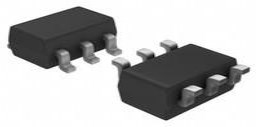 PL602-21TI-R Clock Generator: Pinout, Equivalent and Datasheet
PL602-21TI-R Clock Generator: Pinout, Equivalent and Datasheet12 March 2022345
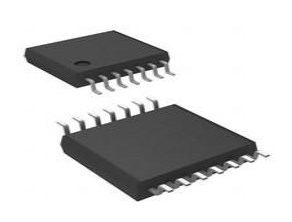 74HCT14 Hex Inverter: Pinout, Equivalent and Datasheet
74HCT14 Hex Inverter: Pinout, Equivalent and Datasheet20 November 20212029
![TDA7056B Audio Amplifiers: Schematic, Pinout, and Datasheet [Video&FAQ]](https://res.utmel.com/Images/Article/0a597bc3-db55-444b-b6f4-38bd051b7609.png) TDA7056B Audio Amplifiers: Schematic, Pinout, and Datasheet [Video&FAQ]
TDA7056B Audio Amplifiers: Schematic, Pinout, and Datasheet [Video&FAQ]06 January 202212423
 AO3401A P-Channel 30V Fast Switching MOSFETs, 4A SOT23 and AO3401A Equivalents
AO3401A P-Channel 30V Fast Switching MOSFETs, 4A SOT23 and AO3401A Equivalents08 February 20225455
 MIC5205 150mA Low-Noise LDO Regulator: Pinout, Datasheet pdf and Circuit
MIC5205 150mA Low-Noise LDO Regulator: Pinout, Datasheet pdf and Circuit25 November 20212420
![The Overview of LSM6DSL [FAQ]](https://res.utmel.com/Images/Article/59a17e36-1515-4fb1-add5-9ccc80e48790.jpg) The Overview of LSM6DSL [FAQ]
The Overview of LSM6DSL [FAQ]12 July 20212205
 AT24C02 Two Wire Serial EEPROM: Pinout, Equivalent and Datasheet
AT24C02 Two Wire Serial EEPROM: Pinout, Equivalent and Datasheet23 April 20222755
 A Comprehensive Guide to LTC6953IUKG#TRPBF Clock Generator by Linear Technology/Analog Devices
A Comprehensive Guide to LTC6953IUKG#TRPBF Clock Generator by Linear Technology/Analog Devices06 March 2024197
 Next-Generation Flexible Display Technology - QLED
Next-Generation Flexible Display Technology - QLED11 October 20213384
 The Introduction to Common Tools and Using Methods of Fiber Optic
The Introduction to Common Tools and Using Methods of Fiber Optic07 January 20226315
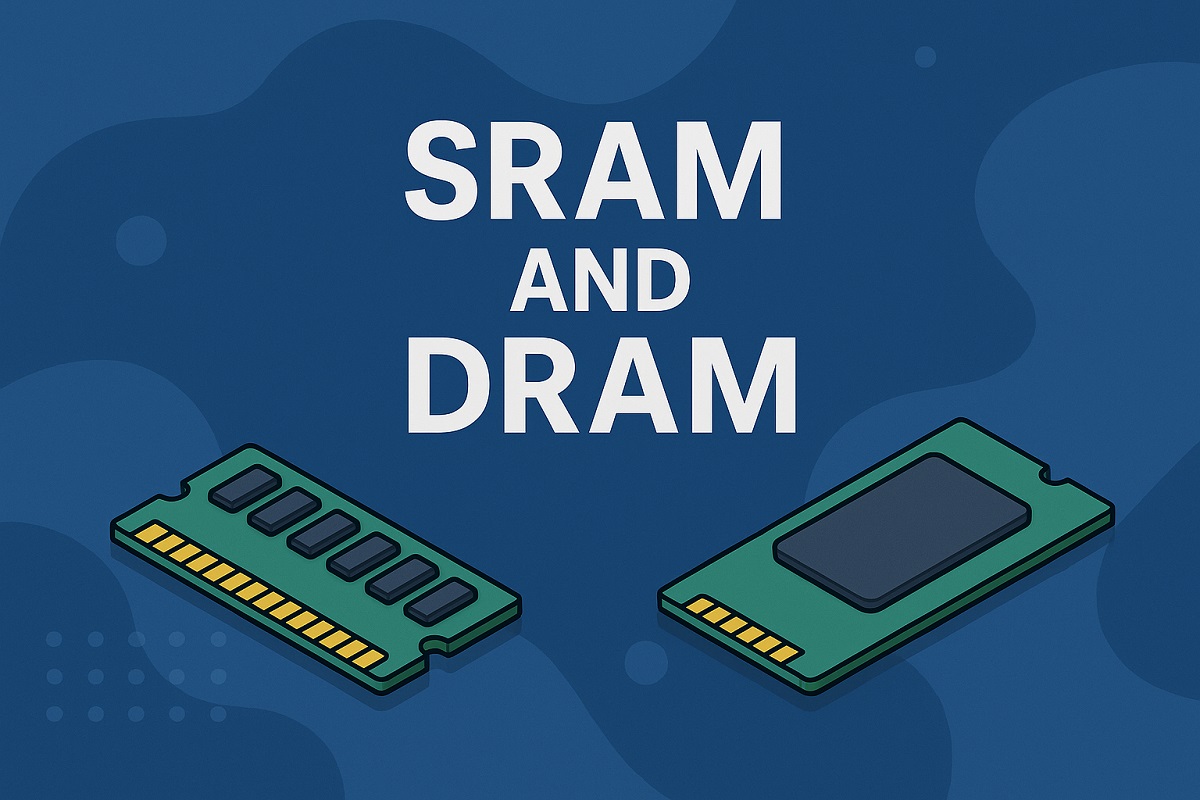 SRAM vs DRAM: Key Differences and Applications Guide
SRAM vs DRAM: Key Differences and Applications Guide05 June 20252386
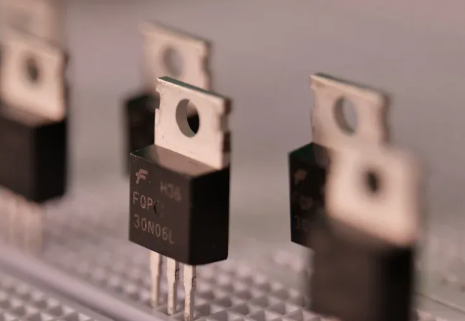 C1815 vs C945 Key Features and Application Guide
C1815 vs C945 Key Features and Application Guide01 September 2025529
 Capacitor Basic: How do Capacitors Work?
Capacitor Basic: How do Capacitors Work?18 April 202514706
 Analysis of Resistors in Series and Parallel
Analysis of Resistors in Series and Parallel16 October 202515044
 Introduction to Light-emitting Diode
Introduction to Light-emitting Diode23 October 20253758
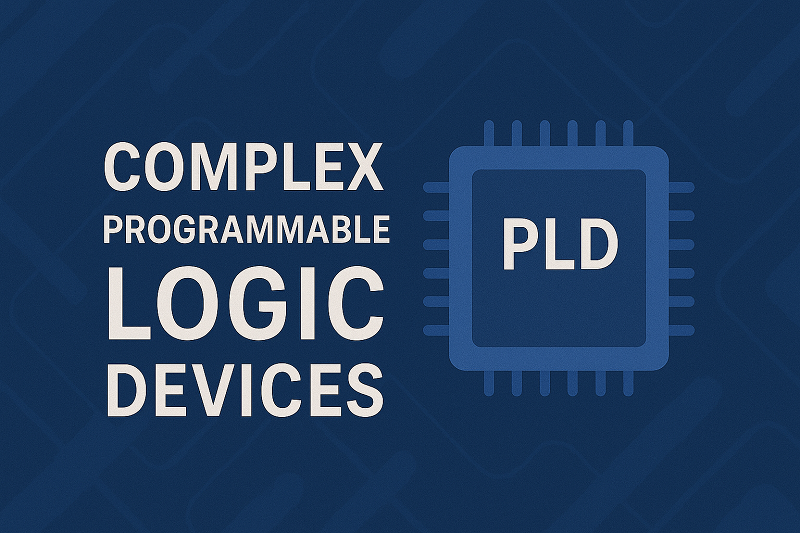 Emerging Trends in Complex Programmable Logic Devices Market 2025
Emerging Trends in Complex Programmable Logic Devices Market 202516 June 2025451
Linear Technology/Analog Devices
In Stock: 520
Minimum: 1 Multiples: 1
Qty
Unit Price
Ext Price
1
$10.038167
$10.04
10
$9.469969
$94.70
100
$8.933933
$893.39
500
$8.428239
$4,214.12
1000
$7.951168
$7,951.17
Not the price you want? Send RFQ Now and we'll contact you ASAP.
Inquire for More Quantity










